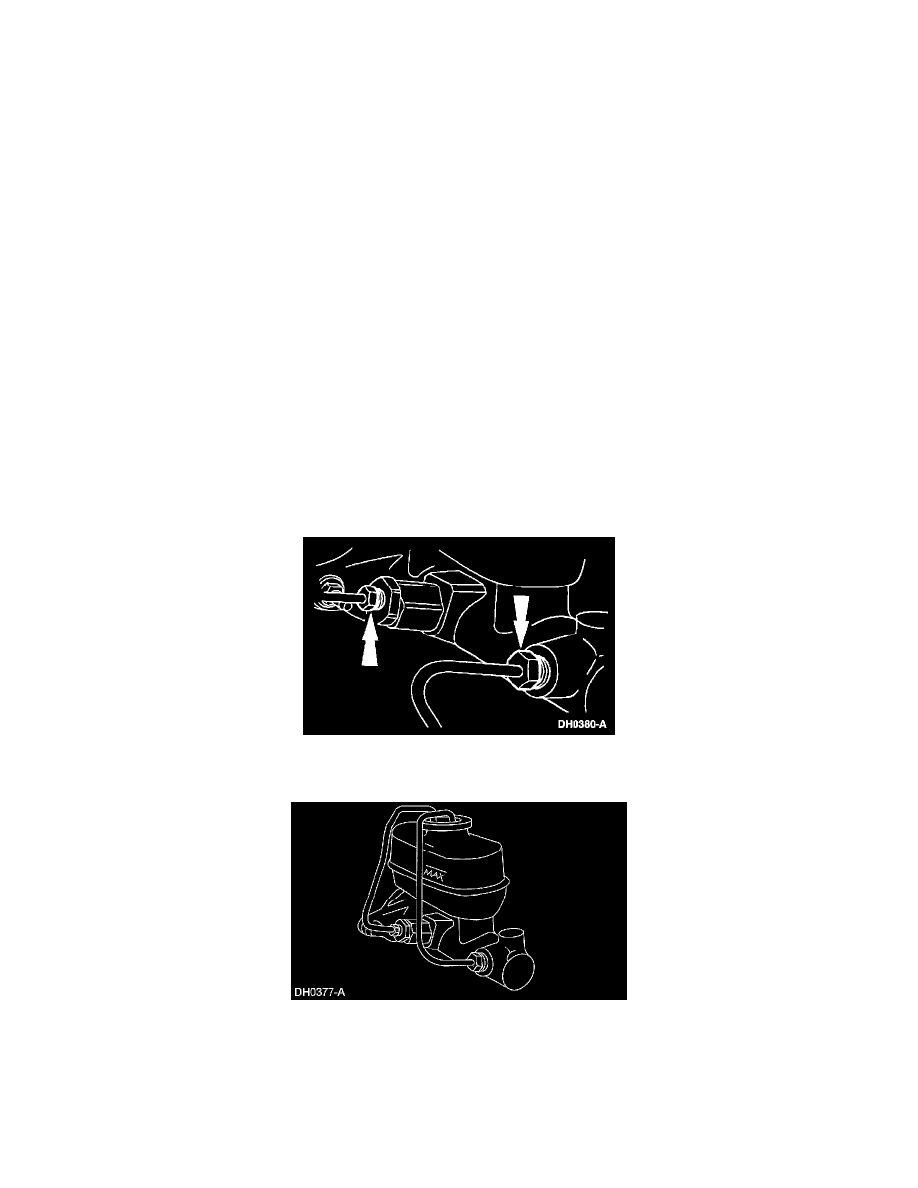Edge FWD V6-3.5L (2007)

Brake Bleeding: Service and Repair
Master Cylinder
Master Cylinder
WARNING: Use of any other than approved DOT 3 motor vehicle brake fluid will cause permanent damage to brake components and will
render the brakes inoperative. Failure to follow these instructions may result in personal injury.
WARNING: Carefully read cautionary information on product label. For EMERGENCY MEDICAL INFORMATION seek medical advice.
In the USA or Canada on Ford/Motorcraft products call: 1-800-959-3673. For additional information, consult the product Material Safety
Data Sheet (MSDS) if available. Failure to follow these instructions may result in personal injury.
CAUTION: Do not allow the brake master cylinder reservoir to run dry during the bleeding operation. Keep the brake master cylinder
reservoir filled with clean, specified brake fluid. Never reuse the brake fluid that has been drained from the hydraulic system.
CAUTION: Brake fluid is harmful to painted and plastic surfaces. If brake fluid is spilled onto a painted or plastic surface, immediately wash
it with water.
NOTE: When a new brake master cylinder has been installed or the system has been emptied, or partially emptied, it should be primed to prevent air
from getting into the system.
NOTE: When any part of the hydraulic system has been disconnected for repair or new installation, air may get into the system and cause spongy
brake pedal action. This requires bleeding of the hydraulic system after it has been correctly connected. The hydraulic system can be bled manually or
with pressure bleeding equipment.
1. NOTE: When a new brake master cylinder has been installed or the system has been emptied, or partially emptied, it should be primed to prevent
air from getting into the system.
Disconnect the brake master cylinder outlet tubes.
2. Install short brake tubes with ends submerged in the brake master cylinder reservoir and fill the brake master cylinder reservoir with clean,
specified brake fluid.
3. Have an assistant pump the brake pedal until clear fluid flows from both brake tubes without air bubbles.
4. Remove the short brake tubes and install the brake outlet tubes.
5. Bleed each brake tube at the brake master cylinder as follows:
1
Have an assistant pump the brake pedal and then hold firm pressure on the brake pedal.
2
Loosen the rearmost brake tube fittings until a stream of brake fluid comes out. Have an assistant maintain pressure on the brake pedal while
tightening the brake tube fitting.
3
Repeat this operation until clear, bubble-free fluid comes out.
